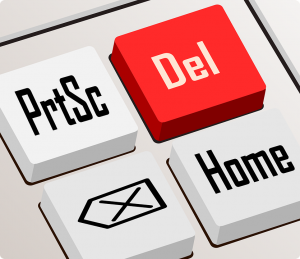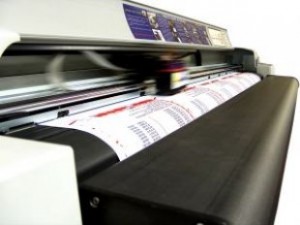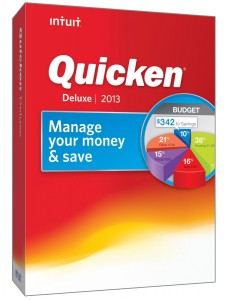Quickbooks Tip: How to Delete an Available Credit
 Looking to delete an available credit in Quickbooks? The popular accounting software uses credit memos whenever a refund is made to a customer. If the customer returns a product, for instance, you may want to refund his or her money, in which case a memo is created. These credits will subsequently increase the amount of credit available on the customer’s account.
Looking to delete an available credit in Quickbooks? The popular accounting software uses credit memos whenever a refund is made to a customer. If the customer returns a product, for instance, you may want to refund his or her money, in which case a memo is created. These credits will subsequently increase the amount of credit available on the customer’s account.
Normally, it’s best to leave the credit on the customer’s account. But what if you want to remove it? Maybe the credit was erroneous and should not have been applied to the customer, or perhaps that customer decided to keep the product instead of returning it. Regardless, you’ll want to eliminate the credit from your financial transactions. Allowing it to remain active on your account could throw off your billing, forcing you to reconcile later in an effort to find the missing transaction.
Quickbooks allows users to “void” credit memos, which erases the available credit from the respective customer’s account while still leaving a copy of the record in your transaction history.
To delete an available credit on a customer’s account, log into Quickbooks and choose the Customers menu > Customer Center > Customers & Jobs. Next, scroll through the list of customer associated with your account and choose the one for whom you would like to delete the available credit. Now open the credit memo that you would like to delete, click the “Edit” menu followed by “Void Credit Memo” or “Delete Credit Memo.” Confirm the changes and the credit will no longer be attached to that customer’s transactions.
Assuming you followed the steps outlined above, the available credit should no longer be found in the customer’s transactions. It’s always a good idea to go back and check, however. To do this, simply go to the Customers menu > Customer Center > Customers & Jobs, and look for the customer’s credit.
Did this tutorial work for you? Let us know in the comments section below!
How to Run a Report with All Vendor Totals
 Looking to run a report in Quickbooks that contains all vendor totals? There’s actually a quick and easy way to perform this operation. Assuming you have a licensed and active copy of the Quickbooks accounting software, follow the steps listed below to run a report with all vendor totals. Doing so will reveal all money paid to every vendor associated with your account.
Looking to run a report in Quickbooks that contains all vendor totals? There’s actually a quick and easy way to perform this operation. Assuming you have a licensed and active copy of the Quickbooks accounting software, follow the steps listed below to run a report with all vendor totals. Doing so will reveal all money paid to every vendor associated with your account.
When you are ready to being, fire up your Quickbooks account/software and choose the “Reports” option from the left-hand menu. Next, in the “Go to reports” section, enter “Transaction List by Date” and then choose “Transaction List by Date” followed by “Customize.” You should now enter the correct year for the transaction date. If you are trying to acquire a report for all vendor totals from 2013, for instance, you should choose 2013.
After specifying the transaction year date, choose “Vendor” under “Group By.” On the left-hand side, you’ll see a series of options. Click “Lists,” and then set the Transaction Type to Select Multiple, at which point you can add the following transaction types: Bill Payment Check, Bill Payment Credit Card, Cash, Check, Credit Card Expense, Credit Card Credit, Vendor Credits.
Although optional, some users may want to run a report on a particular vendor, in which case you should click the drop-down menu next to “Name” and choose the desired vendor. For reports on multiple vendors, choose the “Select Multiple” options. Doing so will allow you to choose multiple vendors at once. When you are finished choosing your desired vendors, click “OK” followed by “Run Report” to complete the process. Quickbooks will now compile a report in which all of your vendor payments are listed. You can click the “Excel” button at the top of this report for a total of all your payments. Sorry if you were expecting more, but that’s all it takes to a run a report with all vendor totals in Quickbooks!
Did this Quickbooks tutorial work for you? Let us know in the comments section below!
How to Record a Loan Payable in Quickbooks
 Still trying to figure out how to record a loan payable in Quickbooks? If you are reading this, I’m going to assume the answer is yes. Quickbooks is a loaded with features to streamline your accounting, including the ability to record loan payables. To learn more about this feature, keep reading.
Still trying to figure out how to record a loan payable in Quickbooks? If you are reading this, I’m going to assume the answer is yes. Quickbooks is a loaded with features to streamline your accounting, including the ability to record loan payables. To learn more about this feature, keep reading.
The first step in the process of recording a loan payable is to create a liability account. Here’s where things get tricky, though: if you plan on repaying the loan within the current fiscal year, you’ll need to create the liability account from “Other Current Liability (or Current Liabilities.” If you do you not plan on repaying the loan within the current fiscal period, you’ll need to choose “Long Term Liability (or non-current liabilities.”
Assuming you plan on repaying the loan within the current fiscal period, you can record it by logging into your account and clicking the Gear Icon > Chart of Accounts > New > Other Current Liabilities (or Current Liabilities) > Loan Payable > and then enter a name for the loan. Names are completely optional, but using one will help you remember what the loan is for. When you are finished, click Finish to complete the setup.
Now that your loan has been created, it’s time to enter a balance for it. From the default Quickbooks home screen, click the + icon > Bank Deposit > Deposit To > and enter the date of the deposit. Next, enter the Loan Payable amount that you just created under the “Accounts” column and click Save.
Of course, you’ll probably be making payments towards your loan on a regular basis, in which case you’ll need to record them in Quickbooks. This is done by clicking the + icon > Check/Cheque > now enter the check for the appropriate amount and complete the other required fields. Quickbooks also has a helpful option that allows users to set up recurring payments for loans. This is done by ticking the box “Make Recurring,” at which point the payment will be send on the specified date each month.
Did this tutorial work for you? Let us know in the comments section below!
Help! Quickbooks Keeps Losing Connection
 Have you noticed a “Connection has been lost” error message when using Quickbooks? It’s frustrating when you are in the middle of updating your account, only to see this message appear on your screen. Quickbooks displays this error message when it’s unable to locate your company file, for which there are a few possible causes.
Have you noticed a “Connection has been lost” error message when using Quickbooks? It’s frustrating when you are in the middle of updating your account, only to see this message appear on your screen. Quickbooks displays this error message when it’s unable to locate your company file, for which there are a few possible causes.
Restart Quickbooks
You’ll probably have to do some trial-and-error to fix the problem. Intuit recommends users first restart their computer upon experiencing this error message. Go ahead and restart Quickbooks to see if fixes the error message. If it does not, proceed to restart your computer. Don’t just hit the physical power button on your computer, but actual use the Windows shut down feature.
Download and Use File Doctor
Hopefully either restarting Quickbooks or your computer resolved the problem. If it did not, you should try using the Quickbooks File Doctor tool. Found on the Intuit website, this free-to-use tool is designed to fix a wide range of errors and problems, including the nefarious “Connection has been lost” message. Simply download the tool to your computer, install it to your hard drive, and then launch it. When it’s finished, you can view the results to see what it found. If the File Doctor tool identified damaged data, you’ll have the option to either repair the file, restore a backed up company file, recover all or most data with Quickbooks Auto Data Recovery, or send your company file to the Data Recovery Team.
Seek Professional Help
Unfortunately, even the File Doctor tool isn’t always enough to fix this problem. If you’ve exhausted all of your options and are still unable to resolve this error message, you should seek professional assistance. Depending on which version of Quickbooks you are running, you may have several different options. Hosted Quickbooks, for instance, typically provides comprehensive technical support to its users. Hosted Quickbooks’ users can contact their respective hosting company, or they can contact Intuit for assistance.
Did this tutorial work for you? Let us know in the comments section below!
How to Split Payments in Quickbooks
 Still trying to figure how to split payments in Quickbooks? If you are reading this, I’m assuming the answer is yes. Intuit’s Quickbooks software is loaded with helpful features, including the ability to split payments. So if you’re trying to split a payment, keep reading to learn the step-by-step process.
Still trying to figure how to split payments in Quickbooks? If you are reading this, I’m assuming the answer is yes. Intuit’s Quickbooks software is loaded with helpful features, including the ability to split payments. So if you’re trying to split a payment, keep reading to learn the step-by-step process.
Before we begin, it’s important to note that only one account can be associated for each transaction that is already entered into the register. The good news is that you can still list multiple accounts on the transaction, assuming you open it and then “split” the accounts. Don’t worry, it’s a relatively simple and painless procedure that should only take a couple minutes.
For Quickbooks Online, you can split payments for transactions that have not been entered into the register by opening the form for the respective type of deposit for which you are splitting (e.g. Deposit, Check, etc.), enter each split account on its own line, and then save the transaction. Sorry if you were expecting more, but that’s all it takes to create split payments! Creating split payments is easier is if you haven’t entered the transaction into the register. But even if you have, you can still split the payments, so don’t worry.
If you are looking to split payments on a transaction that has already been entered into the register, there are a few additional steps in the process. After logging into your account, choose Transactions on the left-hand menu, followed by CHart of Accounts. Next, choose your bank account and select View Register/Account History > Edit. From here, you can enter the second bank account with the appropriate balance. When you are finished, click Save to complete the process and exit the menu.
a transaction is entered directly into the register, only one account can be associated with it. If you need to list multiple accounts on the transactions, you will need to open the appropriate entry screen (Invoice, Bill, etc.,) in order to associate split (multiple) accounts.
Did this tutorial work for you? Let us know in the comments section below!
How to Open Quickbooks Company File on a Network
 Looking to open a Quickbooks company file from a remote computer? Well, you can do so as long as the remote computer is connected to the network on which the company file is hosted. This feature is particularly useful for large offices where dozens of workstations are set up. Rather than restricting Quickbooks to a single workstation, this feature allows any authorized user on the network to access it.
Looking to open a Quickbooks company file from a remote computer? Well, you can do so as long as the remote computer is connected to the network on which the company file is hosted. This feature is particularly useful for large offices where dozens of workstations are set up. Rather than restricting Quickbooks to a single workstation, this feature allows any authorized user on the network to access it.
Enable File Sharing for Company File Folder
The first step towards accessing a Quickbooks file on a network is to enable file sharing. The exact process for enabling file sharing varies depending on which operating system you are using. Generally speaking, though, you can usually right-click the folder and choose network sharing properties to enable it. File-sharing must be enabled for the folder that is currently storing the Quickbooks company file.
Enable Multi-User Access
Next, you must enable multi-user access for both computers — the computer on which the company file is located, as well as the company from which you intend to remotely access the company file. You can refer to this article for more information on how to set up multi-user access.
What About Company Files on a Server?
You can still remotely access a company file that is located on a server as opposed to a workstation. In order to do so, though, you’ll need full FTP access to the server. Contact your IT admin for assistance on accessing the server.
Map Computer as Network Drive
Another prerequisite of setting up remote file access is mapping the computer or server as a network drive on your own computer.
Assuming you follow these instructions, you’ll be on your way to accessing your Quickbooks company file from a remote computer. Just install Quickbooks on the new computer, and under the “File” menu, select “Switch to Multi-user Mode.” Now click “Yes” in the Multi-user hosting setup required window and proceed with the on-screen instructions. You’ll be prompted to answer a few more questions regarding the installation, but assuming all goes well, you’ll be able to access your Quickbooks company file from the remote computer.
Did this tutorial work for you? Let us know in the comments section below!
Help! Quickbooks Keeps Aborting After Inactivity
 Quickbooks remains the world’s most popular and widely used accounting software for small businesses, and for good reason: it’s versatile, easy to use, loaded with features, and backed by Intuit’s first-class support. But even Quickbooks is prone to errors from time to time, with some users reporting that the software keeps aborting after long periods of inactivity. So, what’s causing this problem and how do you fix it?
Quickbooks remains the world’s most popular and widely used accounting software for small businesses, and for good reason: it’s versatile, easy to use, loaded with features, and backed by Intuit’s first-class support. But even Quickbooks is prone to errors from time to time, with some users reporting that the software keeps aborting after long periods of inactivity. So, what’s causing this problem and how do you fix it?
If you see see the “Abort” message displayed on Quickbooks, you will typically be forced to shut it down and restart the program. This error usually occurs after 20 minutes or so of inactivity.
There are a couple possible causes of this problem, one of which is a conflict with the Windows power settings. Depending on which version of Windows your PC is running, you should be able to modify the power settings via Start > Control Panel > Power Management. After accessing the power management settings, disable all management features that are associated with the hard drive. Once you are finished, save the changes and restart your computer. Hopefully, this will solve the problem, allowing you to continue using Quickbooks without encountering the abort error.
As noted on Intuit’s official website, users can often fix the abort error message in Quickbooks by using the File Doctor tool. After downloading the File Doctor tool, double click the .exe file to install it. This should create a shortcut icon on your desktop. Double click this icon to launch the tool. Now, wait for the tool to scan your Quickbooks installation, at which point it should reveal whether or not any problems have been detected. If the File Doctor detects a problem, you’ll have the option to either repair the file, restore a back up copy of your company file, recovery your data with Auto Data Recovery, or send your company file to Intuit’s Data Recovery Team.
Did this tutorial work for you? Let us know in the comments section below!
How to Print all Invoices in Quickbooks
 Looking to print all of your invoices using the Quickbooks accounting software? If you are reading this post, I’m assuming the answer is yes. If you just recently launched your small business, you may not have many invoices, in which case you can print them individually. But if your business has been operational for any prolonged length of time, this isn’t a viable option.
Looking to print all of your invoices using the Quickbooks accounting software? If you are reading this post, I’m assuming the answer is yes. If you just recently launched your small business, you may not have many invoices, in which case you can print them individually. But if your business has been operational for any prolonged length of time, this isn’t a viable option.
Thankfully, there’s a simple way to print multiple invoices using Quickbooks. But before you proceed, you should first check to make sure that all of your invoices are “flagged” for batch printing. Without the invoices being flagged, you won’t be able to print them in batches.
To print multiple invoices, log into your Quickbooks account, click on the + sign > Invoice > complete the form > and click Save. Sorry if you were expecting more, but that’s all it takes to print multiple invoices using Quickbooks!
Of course, some users may wish to email their invoices or sales transactions, in which case you should click the Transactions menu in the upper left menu, followed by Sales. Next, select Type of transaction, Status and Delivery Method in the Filter column. Make a check next to each transaction that you would like to email. In the Batch Actions drop-down menu, choose Send Transaction to email them. If you wish to print them instead, however, you can select the Print Transactions option.
It’s important to note that all transactions will show up under the Sales Transaction section of your Quickbooks software. When emailing the transaction, you can check to see if it needs editing to include the email address on the actual transaction. This is done by double clicking the invoice form the Sales Transaction menu, at which point you can enter next text or modify existing text to reflect the recipient’s email address. When you are finished, click Save and Close to complete the process and return back to the Sales Transaction menu.
Note: you can also email an invoice or sales transactions to multiple recipients. Just separate the recipient’s address with a comma.
Did this tutorial work for you? Let us know in the comments section below!
How to Add Logo to a Quickbooks Invoice
 As a business owner, you probably want to display your brand material on any and all documents possible. Whether it’s your business card, website, social media accounts, or billing invoices, it’s important to display your brand material, such as your logo for instance. Thankfully, Quickbooks offers a quick and easy way to integrate your brand logo onto invoices. Here’s how you do it.
As a business owner, you probably want to display your brand material on any and all documents possible. Whether it’s your business card, website, social media accounts, or billing invoices, it’s important to display your brand material, such as your logo for instance. Thankfully, Quickbooks offers a quick and easy way to integrate your brand logo onto invoices. Here’s how you do it.
To add your logo to an invoice template, log into your Quickbooks account and open the Basic Customization window. Next, select the “Use Logo” checkbox under the Basic Customization window. Assuming this is your first time using a custom logo, you’ll have the option to select one. Browse through your files and choose your brand’s logo. It’s recommended that you use a square-shaped logo for best results, as Quickbooks uses this native format. Even if you don’t use a square logo, though, Quickbooks will automatically reshape and resize it accordingly.
After selecting your logo, click the Open button to return back to the Basic Customization window and preview your logo. If you wish to see how it looks in person, you can click the Print Preview button. When you are happy with your logo, click OK to save the changes and close your session. Sorry if you were expecting more, but that’s all it takes to set up a logo on your Quickbooks invoices!
Of course, some users may wish to reposition their logo. By default, Quickbooks includes logos on the upper left corner of invoices and forms. You can change this position, however, in just a few basic steps. To do this, open the Layout Designer, select your logo in the upper left corner, and then drag and drop it to the desired location. Depending on the current layout of your invoice, you may have to move and adjust some of the existing elements to make room for the logo. When you are finished click OK to complete the changes and you are done.
Did this tutorial work for you? Let us know in the comments section below!
Intuit Launches Quicken 2016: What You Should Know
 It wasn’t long ago when Quicken was the preferred choice of accounting software among small business owners and professional accountants. It offered an easy-to-use, versatile, and fast interface to accommodate the needs of all users. But the popularity for Quicken gradually died off as users switched to Quickbooks. Well, it appears that Intuit has revived its Quicken software, as the company recently launched a new Quicken 2016 product.
It wasn’t long ago when Quicken was the preferred choice of accounting software among small business owners and professional accountants. It offered an easy-to-use, versatile, and fast interface to accommodate the needs of all users. But the popularity for Quicken gradually died off as users switched to Quickbooks. Well, it appears that Intuit has revived its Quicken software, as the company recently launched a new Quicken 2016 product.
Quicken was originally launched more than three decades ago, a time when accountants — most, at least — were using paper files to keep track of their clients’ finances and spending habits. As such, this paved the way for new, more efficient solutions, such as Intuit’s Quickbooks line of software.
As noted by USA Today, Quicken 2016 remains relatively the same in terms of features and mechanics when compared to its predecessors. But don’t let that fool you into thinking it’s the same product with a different name. Intuit has enhanced the experience for users, streamlining common processes so they are easier and less time-consuming to perform.
When announcing Quicken 2016, Eric Dunn said the software has new features for PC and Mac users which remove some of the otherwise confusing and complex problems associated with paying bills.
“We’re working harder and smarter than ever to delight customers,” said Eric Dunn, senior vice president and general manager of Quicken. “Quicken 2016 affirms our commitment to listening to our customers and helping them achieve financial success at every life stage. Our new features for Mac and Windows users help remove some of the complexity around managing and paying bills. Looking ahead, our goal is to add capability and enhancements to Quicken products that extend the ability for users to easily manage their money across devices.”
Here are some of the additions that you can expect to see in Quicken 2016:
- Mobile app companion for Apple and Android devices.
- Manage complex financials and tax planning.
- Manage bills from the Quicken register.
- Set up alerts to receive reminders for bills, low balanced, etc.
- Track budgets for monthly or seasonal expenses.
- Creates savings goals to cut back on unnecessary expenses.
- And more…
What are your thoughts on Quicken 2016? Let us know in the comments section below!
